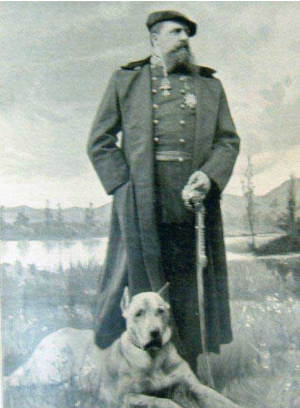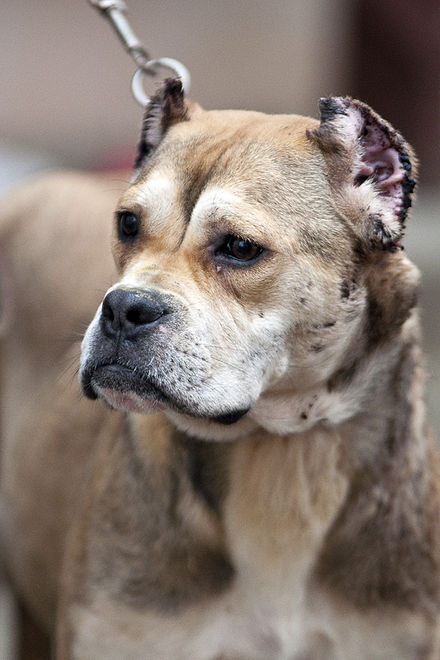
The Alano Espanol hasn’t changed much from how it appeared when Spanish duke, Carlos VII de Borbon, owned them in the 19th century. Part of local history, the Alano, however, may not be native to Spain or even the Mediterranean, and theories abound as to its ancient origins. Prevailing thought links the Alano to a tribe of Sarmatians called the Alans. They were nomadic people situated in an area that stretches over the current Ukraine, Russia, Kazakhstan, Uzbekistan, Turkmenistan, Iran and Afghanistan and Pakistan. After their conquest by the Huns in the fourth century, they and their large livestock guardian dogs migrated westward, crossed the Pyrenees and wandered into the Iberian Peninsula in 406 AC as part of the Migration Period.
The first written reference to the breed in Spain came in the 14th century with a mention in the “Book of the Hunt of Alfonso XI” (Libro de la Montería de Alfonso XI) in which hunting dogs called Alani were described as having beautiful colors. In 1783, the Alano’s were described as ‘Perro de Presa’ by an academic dictionary. The dogs traveled with Spanish explorers and were utilized as war dogs, to hunt, and in the reprehensible act of subduing native people.

Photo by Ewa Ziemska – via Wikicommons
Fast forward to more modern times, and the dogs were recorded by artist, Francisco de Goya as being used in bullfighting rings as bull baiters. They were also used to hunt wild boar, but when the use of dogs in the bullfighting ring was outlawed in 188o, the dogs were out of a job and breed numbers fell. By 1963, Alanos were thought to be extinct.
In the early 1980s, however, one Carlos Contera and his colleagues searched all of rural Spain in an attempt to learn if any of the legendary molossers survived. To their surprise and delight, a few were found in Extremadura, Castille, Enkarterri and Cantabria, dogs that were being used to herd semi-wild cattle and hunt wild boar. They also discovered a large and stable population of about 300 Alanos in the Encartaciones Valley in northern Spain. The restoration of the breed started from the best of these Alanos after their DNA was analyzed by the Faculty of Veterinary Medicine of the University of Cordoba to ascertain their authenticity. Thanks to the university’s ten year old research, the Alano was officially recognized in March 2003 by the Royal Spanish Canine Society (RSCE), holder of its own origin book, the oldest of its kind.
Today the breed sometimes called the Spanish Bulldog is used for cattle handling and hunting, its legendary jaw coming into use in working with much larger animals. Its biddability sees to it that the dog releases its prey when told to, the release as important as the holding when working with cattle. Because of the breed’s versatility, it can also be seen herding, tracking, performing police work and Schutzhund, as well as weight pulling, and participating in obedience and agility.
Efforts are underway to get the Alano recognized by the FCI, and it is surely a rare breed: In 2006, 711 Alanos were counted, though sadly, no reliable counting has taken place since then, so it is impossible to say how many exist globally. One source writes that because of the high percentage of neonatal deaths in rural settings, and the death of adults during a hunt, estimates put the number at 600 Alanos alive in the world today.
